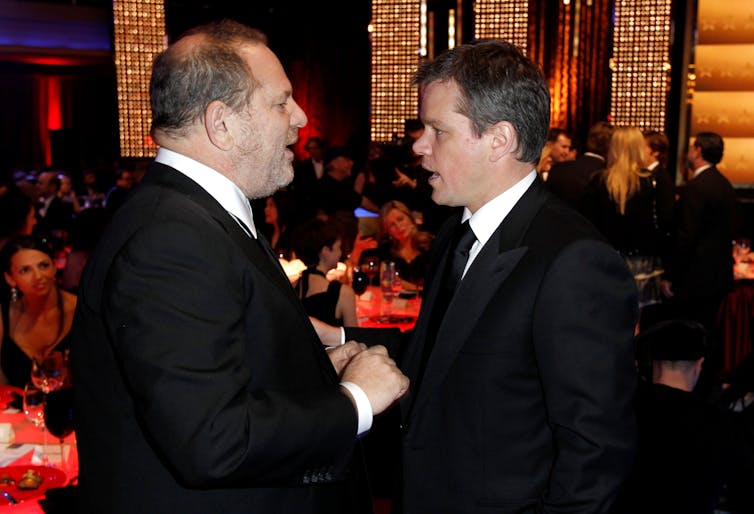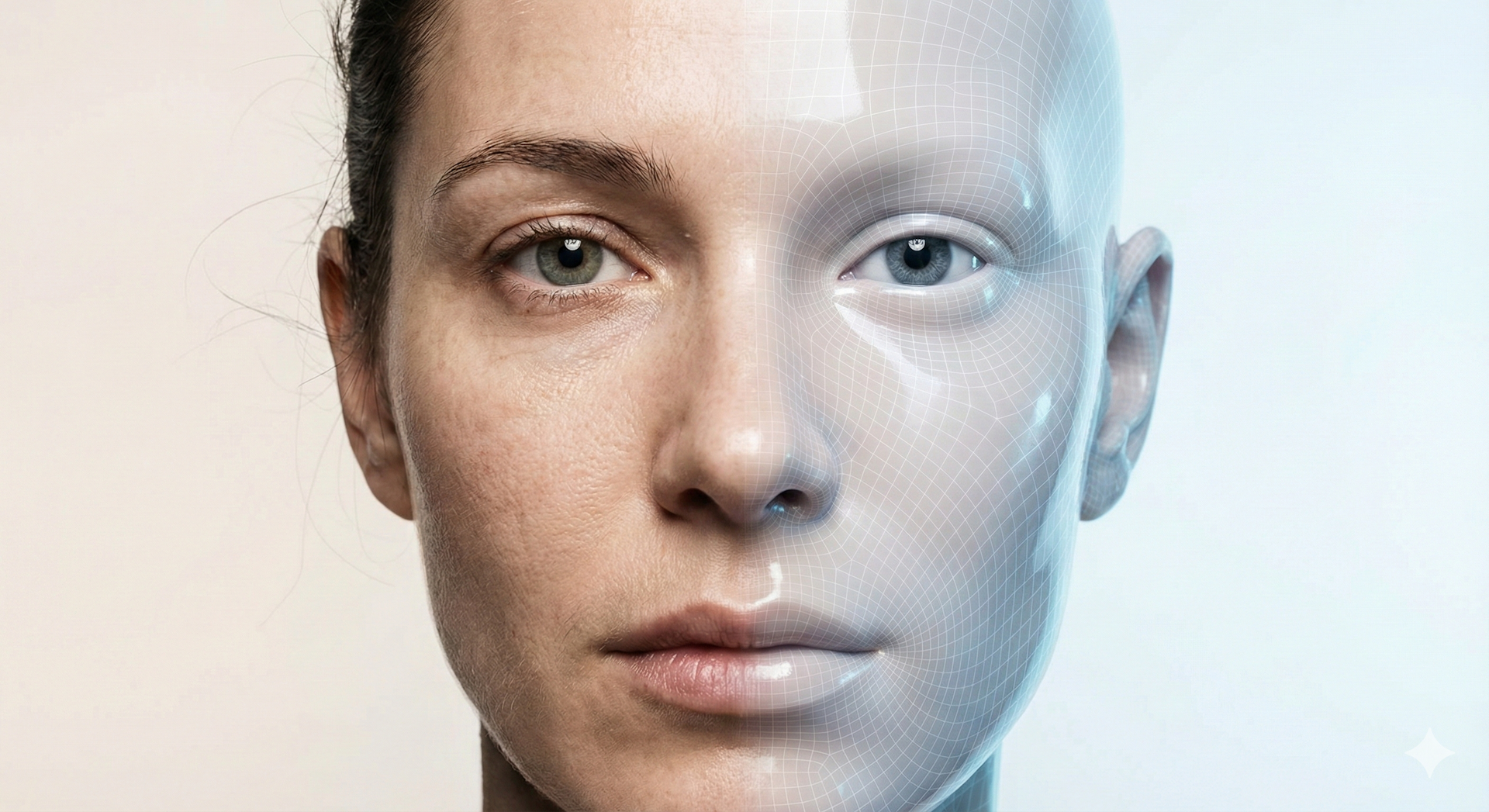Why bystanders rarely speak up when they witness sexual harassment
Research shows that few people take a stand when they witness sexual harassment. Until that changes, this predatory behavior will haunt American workplaces.

The uproar over allegations that Hollywood producer Harvey Weinstein sexually abused and harassed dozens of the women he worked with is inspiring countless women (and some men) to share their own personal sexual harassment and assault stories.
With these issues trending on social media with the hashtag #MeToo, it’s getting harder to ignore how common they are on the job and in other settings.
I have studied sexual harassment and ways to prevent it as a diversity and inclusion researcher. My research on how people often fail to speak out when they witness these incidents might help explain why Weinstein could reportedly keep his despicable behavior an open secret for decades.
Witnessing sexual harassment
Of course, Weinstein’s alleged wrongdoings went well beyond sexual harassment, which University of British Columbia gender scholar Jennifer Berdahl defines as “behavior that derogates, demeans or humiliates an individual based on that indiviudual’s sex.”
Some of the women speaking out in the U.S. and abroad are accusing him of rape – a crime – during encounters he says were always consensual.
But sexual harassment is such a chronic workplace problem that it accounts for a third of the 90,000 charges filed with the federal government’s Equal Employment Opportunity Commission (EEOC) in 2015. Since only one in four victims report it, however, the EEOC and other experts say the actual number of incidents is far higher than the official number of complaints would suggest.
The usual silence leaves most perpetrators of this toxic behavior free to prey on their co-workers and subordinates. If sexual harassment is pervasive on the job, and most women don’t report it, what can be done?
Some business scholars suggest that the best way to prevent sexual harassment, bullying and other toxic workplace behavior is to train co-workers to stand up for their abused colleagues when they witness incidents. One reason why encouraging intervention makes good sense is that some 70 percent of women have observed harassment in the workplace, according to research by psychologist Robert Hitlan.
The trouble is that most people who witness or become aware of sexual harassment don’t speak out. Screenwriter, producer and actor Scott Rosenberg has both admitted to and denounced how this dynamic enabled Weinstein to become an alleged serial abuser. “Let’s be perfectly clear about one thing,” he wrote in a private Facebook post published in the media. “Everybody-f—ing-knew.” He also said:
“in the end, I was complicit.
I didn’t say s—.
I didn’t do s—.
Harvey was nothing but wonderful to me.
So I reaped the rewards and I kept my mouth shut.
And for that, once again, I am sorry.”

Researching how people respond
To understand why witnesses often don’t speak up, a colleague and I did a study in 2010 that asked participants to review hypothetical sexual harassment scenarios and indicate if they would respond.
The results seemed promising: Participants generally said they would take steps to stop harassing behavior if they saw it happen. People indicated they’d be more likely to respond if two conditions were met: It was a quid pro quo – that is, if the harasser promised benefits in exchange for sexual favors – and the workplace valued diversity and inclusion. In such cultures, there are open lines of communication, and leaders embrace diversity and inclusion.
There’s a potential problem with experiments using the kind of hypothetical scenario that we and others employed. People don’t always do what they think they will in real-life situations. For example, psychologists find that people tend to believe they’ll feel more distraught during an emotionally devastating event than they actually do when it occurs.
Other researchers find similar patterns with reactions to racists. People think they will recoil and experience distress when hearing racist comments. But when they actually hear those remarks, they don’t.
The same dynamics are at play when examining sexual harassment during job interviews, as illustrated in a study conducted by psychologists Julie Woodzicka and Marianne LaFrance.
Participants, all of whom were women, expected to feel angry, confront the harasser and refuse to answer the hypothetical interviewer’s inappropriate questions. Some of the questions, for example, included asking the job applicant if she had a boyfriend or if women should wear bras at work.
However, when they witnessed this simulated behavior during the experiment’s mock interviews, people responded differently. In fact, 68 percent of participants who only read about the incidents said they would refuse to answer questions. Yet all 50 of the participants who witnessed the staged hostile behavior answered them.
Drawing from these studies, my team conducted an experiment in 2012 to determine how harassment bystanders would react to hearing inappropriate comments about women.
Some of the female participants read about a hypothetical scenario in which harassment took place, while another group observed harassment occurring in a staged setting. We determined that the participants, who were college students, overestimated how they would respond to seeing someone else get harassed.
The reason this matters is that people who don’t feel distress are unlikely to take action.
Intervention training
What stops people from reacting the way they think they will?
Psychologists blame this disparity on “impact bias.” People overestimate the impact that all future events – be they weddings, funerals or even the Super Bowl – will have on them emotionally. Real life is messier than our imagined futures, with social pressures and context making a difference.
This suggests a possible solution. Since context matters, organizations can take steps to encourage bystanders to take action.
For example, they can train their staff to speak up with the Green Dot Violence Prevention Program or other approaches. The Green Dot program was originally designed to reduce problems like sexual assault and stalking by encouraging bystanders to do something. The EEOC says this “bystander intervention training might be effective in the workplace.”
Especially with workplace harassment, establishing direct and anonymous lines for reporting sexist incidents is essential. They also say employees should not fear negative reprisal or gossip when they do report harassment.
Finally, bystanders are more likely to intervene in organizations that make their refusal to tolerate harassment clear. For that to happen, leaders must assert and demonstrate their commitment to harassment-free workplaces, enforce appropriate policies and train new employees accordingly.
Until more people take a stand when they witness sexual harassment, it will continue to haunt American workplaces.
George B. Cunningham does not work for, consult, own shares in or receive funding from any company or organization that would benefit from this article, and has disclosed no relevant affiliations beyond their academic appointment.
Read These Next
West Coast levee failures show growing risks from America’s aging flood defenses
Levees protect more than 7 million buildings in the US today, yet they got a D-plus grade in 2025. A…
Has the Fed fixed the economy yet? And other burning economic questions for 2026
As 2026 begins, uncertainty is at the top of everyone’s mind.
Midlife weight gain can start long before menopause – but you can take steps early on to help your b
What you do in the years leading up to menopause can help counter the natural hormonal effects of aging,…






